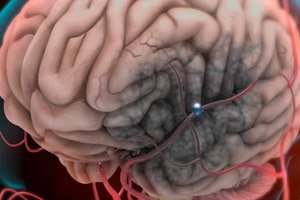
All iLive content is medically reviewed or fact checked to ensure as much factual accuracy as possible.
We have strict sourcing guidelines and only link to reputable media sites, academic research institutions and, whenever possible, medically peer reviewed studies. Note that the numbers in parentheses ([1], [2], etc.) are clickable links to these studies.
If you feel that any of our content is inaccurate, out-of-date, or otherwise questionable, please select it and press Ctrl + Enter.
Study links low mental capacity in adolescence to early stroke
Last reviewed: 02.07.2025

Low intelligence in adolescence may be linked to a threefold increased risk of stroke by age 50, according to a study published online in the Journal of Epidemiology & Community Health.
The observed associations remained significant even after accounting for current diabetes and limiting the age of first stroke to 40 years, leading the researchers to suggest that more comprehensive assessments beyond traditional stroke risk factors are now needed to prevent disability and death.
Recent data show that stroke rates are on the rise among people under 50. And about half of all stroke survivors can expect long-term physical and psychological problems, the researchers note.
Low levels of mental ability in childhood and adolescence - including concentration, problem solving and learning - are associated with higher risks of future cardiovascular and metabolic diseases. But the results are inconsistent, the researchers note.
To strengthen the evidence base, they set out to determine whether cognitive development during adolescence was associated with an increased risk of early stroke in a nationally representative sample of 1.7 million young Israelis.
Before beginning military service, Israelis aged 16 to 20 undergo an extensive assessment to determine their suitability. The study includes everyone who was assessed between 1987 and 2012.
In addition to weight, blood pressure, and current diabetes, education level, socioeconomic background, and mental abilities were also assessed.
Mental abilities include tests of understanding and following verbal instructions; verbal abstraction and categorization (grouping words); mathematical ability, concentration, and conceptual thinking; nonverbal abstract thinking and visual-spatial problem solving.
The study participants' results were then linked to Israel's national stroke database, which began mandatory reporting in 2014, until the end of 2018, the first recorded stroke or death, whichever occurred first.
The final analysis was based on data from 1,741,345 individuals, 738,720 (42%) of whom were women. Of the total, 12% (312,769) scored high on intelligence, 70% (1,220,514) scored average, and 18% (208,062) scored low.
Compared with those whose scores indicated high levels of mental ability, those at the other end of the scale were more likely to be overweight or obese (17% vs. 12%), less likely to have completed high school (82% vs. 99%), and more likely to live in socially and economically disadvantaged areas (35% vs. 19%)—all risk factors for cardiovascular disease.
From 2014 to 2018, 908 cases of stroke were registered, of which 767 were caused by a blood clot (ischemic stroke) and 141 by bleeding in the brain (intracerebral hemorrhage).
The average age at first stroke was 39.5 years (maximum age 50 years). And 45 people died as a result of stroke (5% of all stroke cases), almost two-thirds of whom (62%) died within 30 days of the event.
Among those who scored low and average on mental ability, the incidence of both types of stroke was higher, especially ischemic stroke.
After accounting for potentially confounding factors, those with low intelligence were more than 2.5 times more likely to have a stroke before age 50 than those with high intelligence, and those with average intelligence were 78% more likely to be at risk.
Of the 767 cases of ischemic stroke, 311 (41%) occurred before age 40. After accounting for potentially confounding factors, the risk was almost twice as high (96%) among those with average intelligence and more than three times as high among those with low intelligence as adolescents.
The risk increased in tandem with the level of intelligence, such that for every unit decrease in score (scale 1 to 9), the risk increased by 33%. However, in an analysis based on intelligence categories alone, no such associations were found for stroke with cerebral hemorrhage.
These associations remained significant even after further detailed analyses, including accounting for current diabetes and limiting the age of first stroke to 40 years.
This is an observational study, so it cannot establish cause and effect. The researchers also acknowledge various limitations of their findings, including a lack of information on lifestyle factors such as smoking, physical activity, and diet; higher education; and several potentially important social determinants of health.
But they write: "Without intervention on risk factors, stroke risk accumulates in early adulthood." And they conclude: "Cognitive function may serve as a means of stratifying individuals at higher risk of stroke and for intervention through possible mediators such as low health literacy, education, and health-related behaviors. Providing early social and health support to individuals with low cognitive function may be important to reduce their increased risk."
